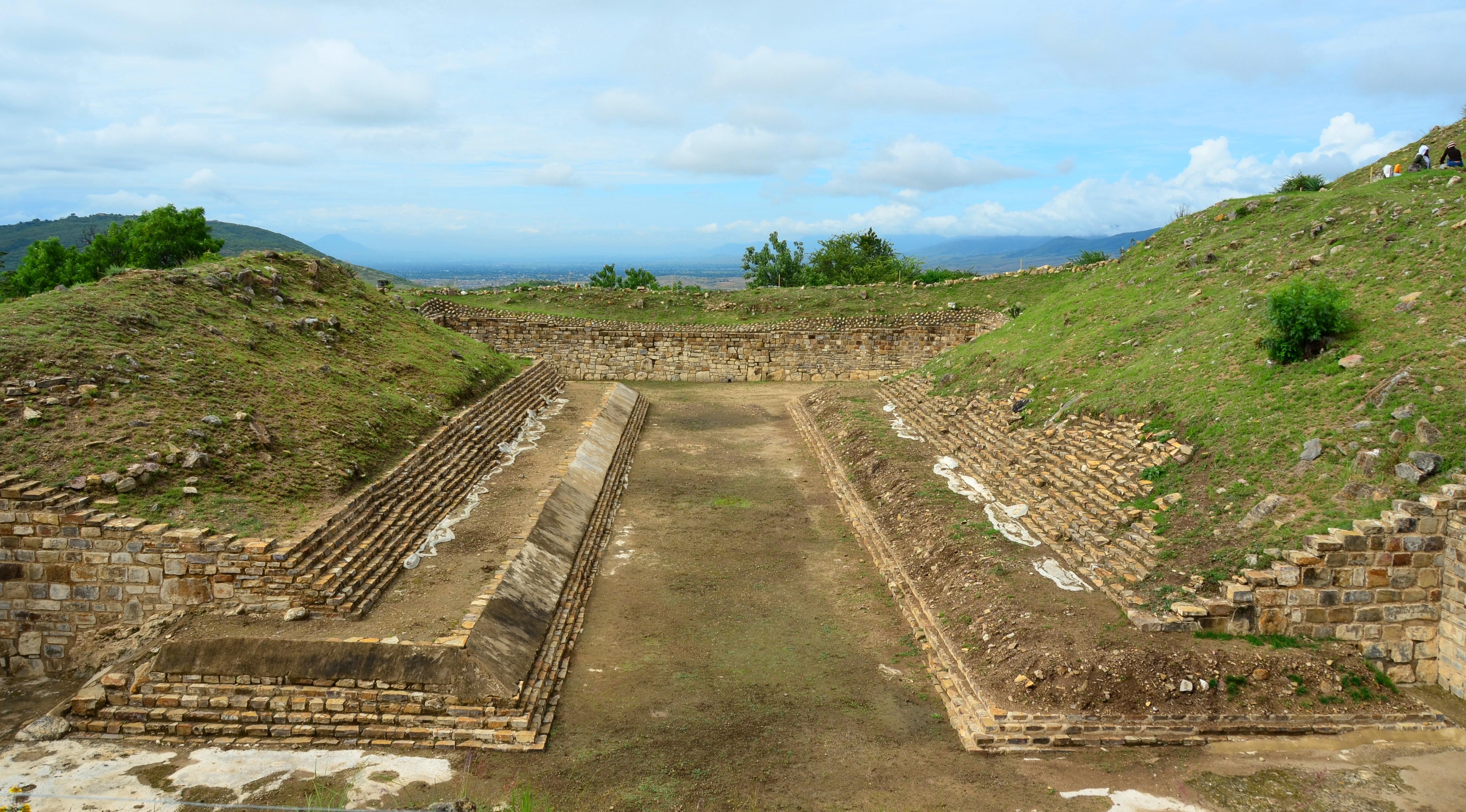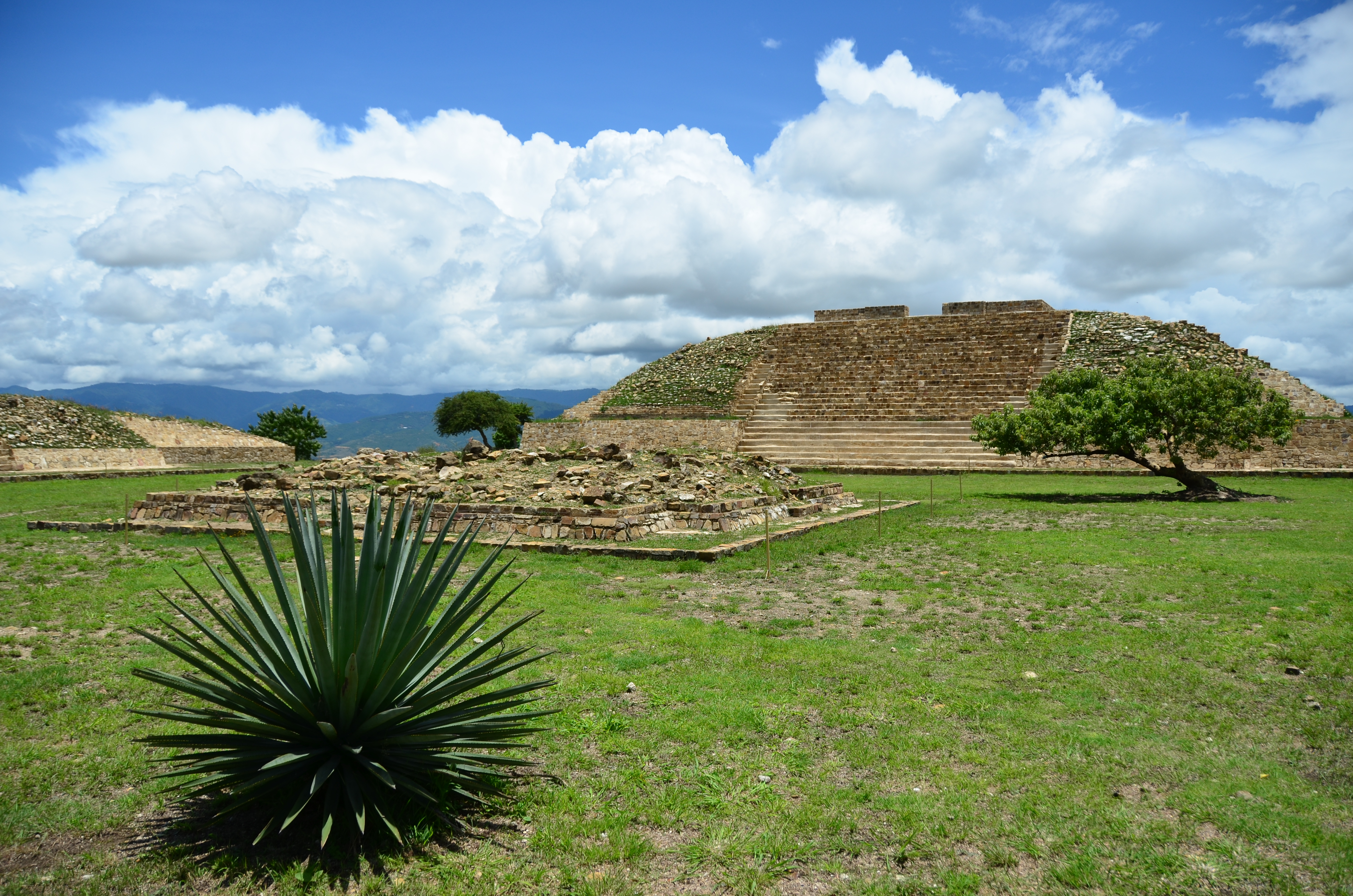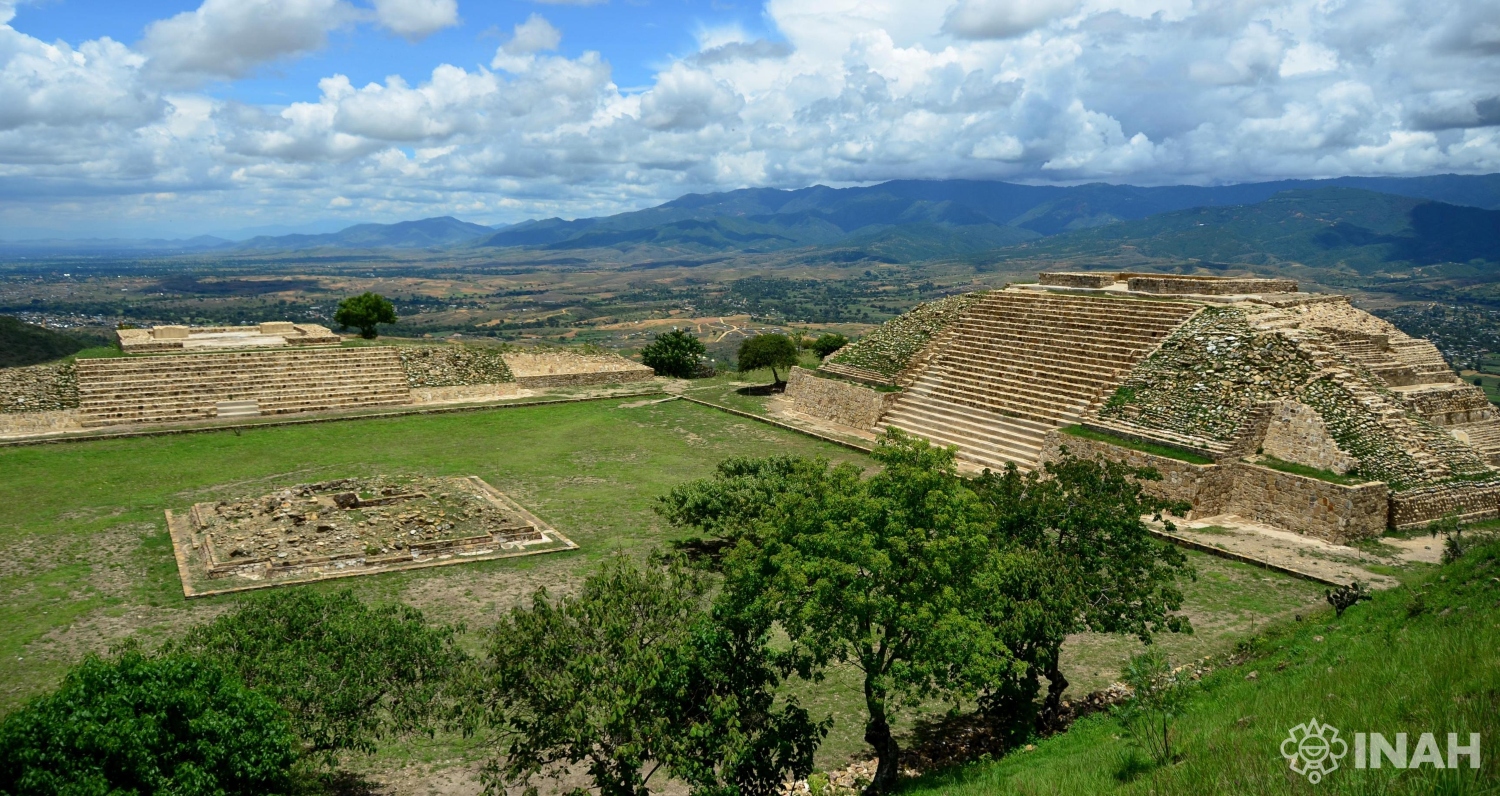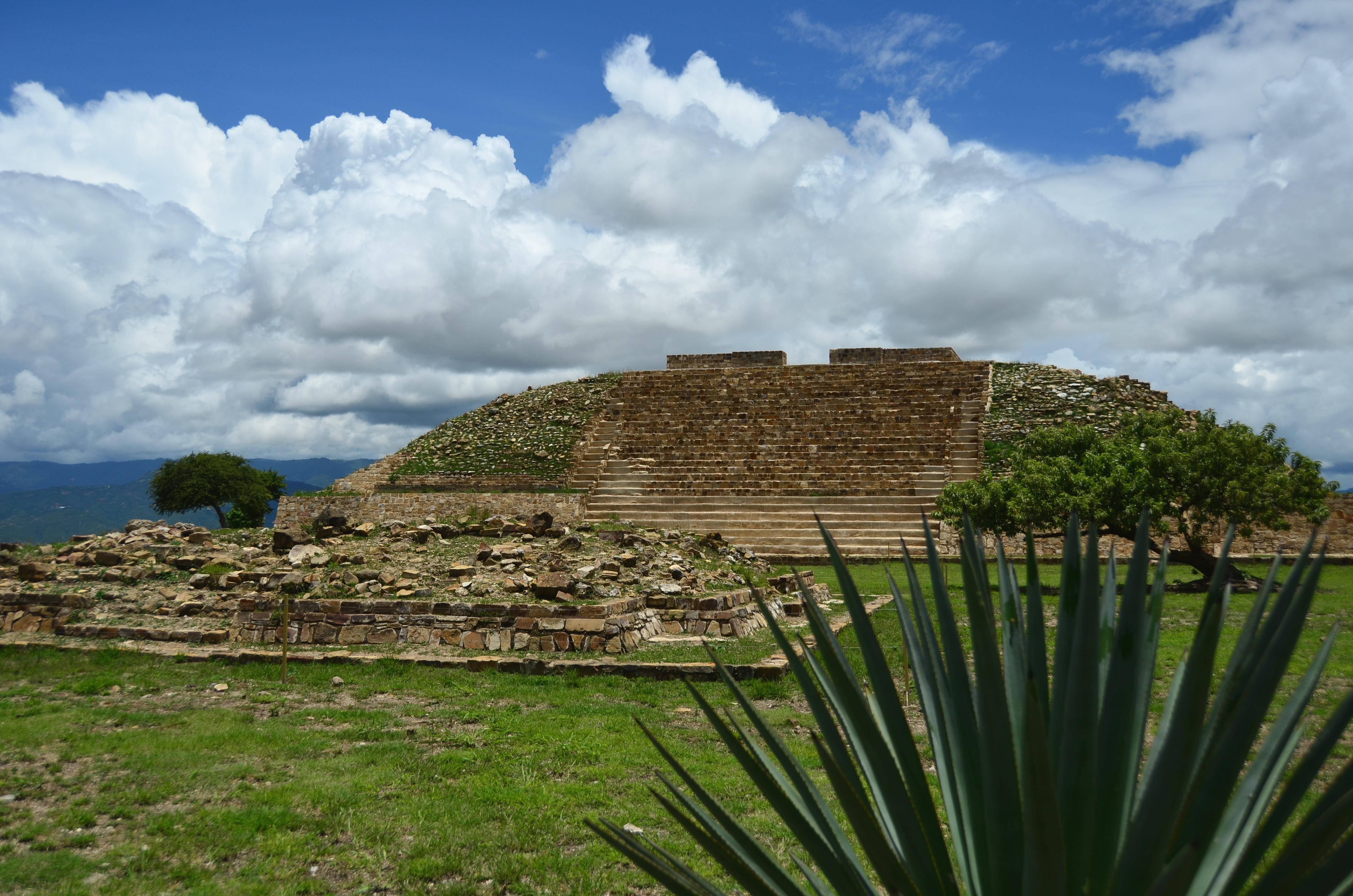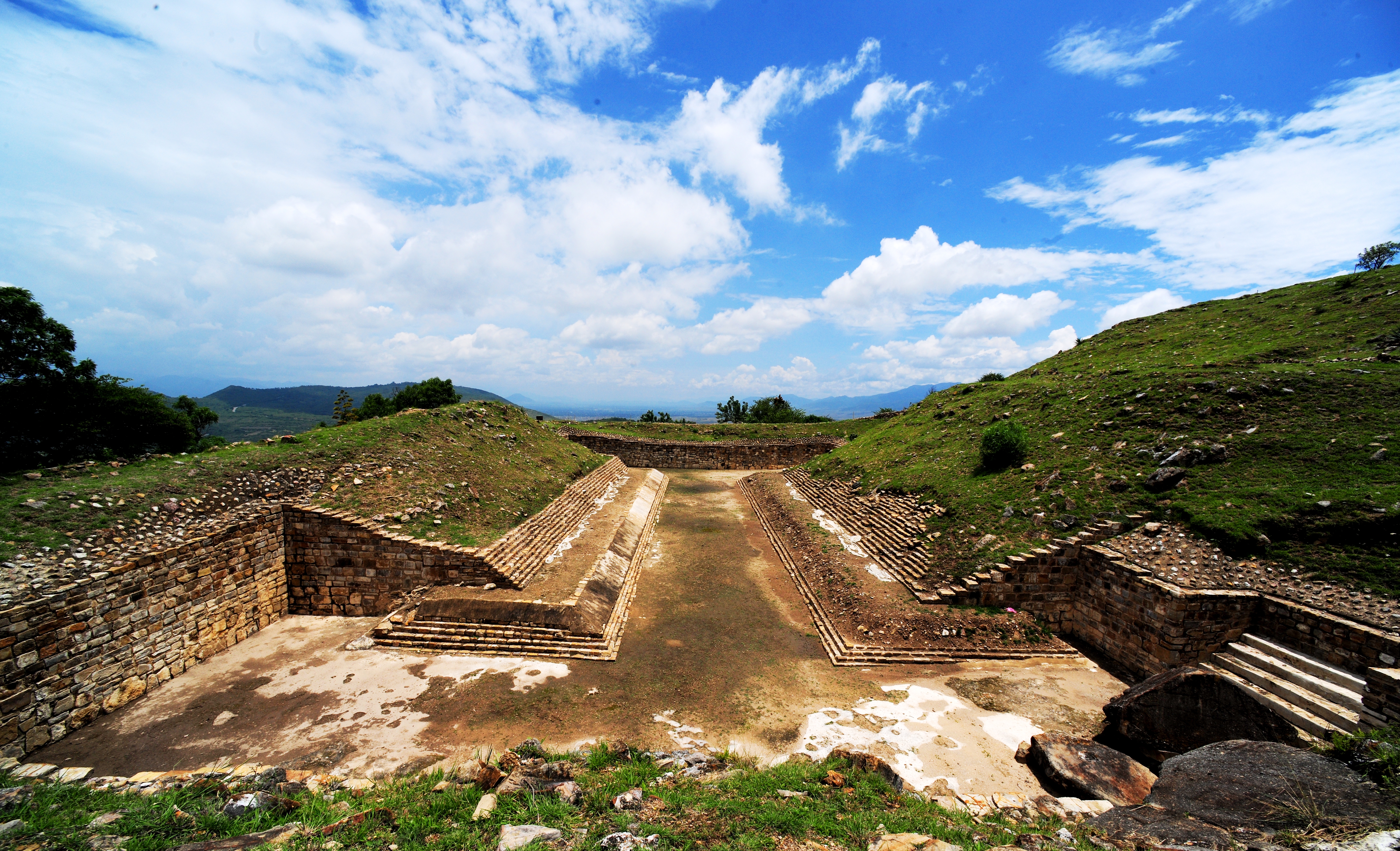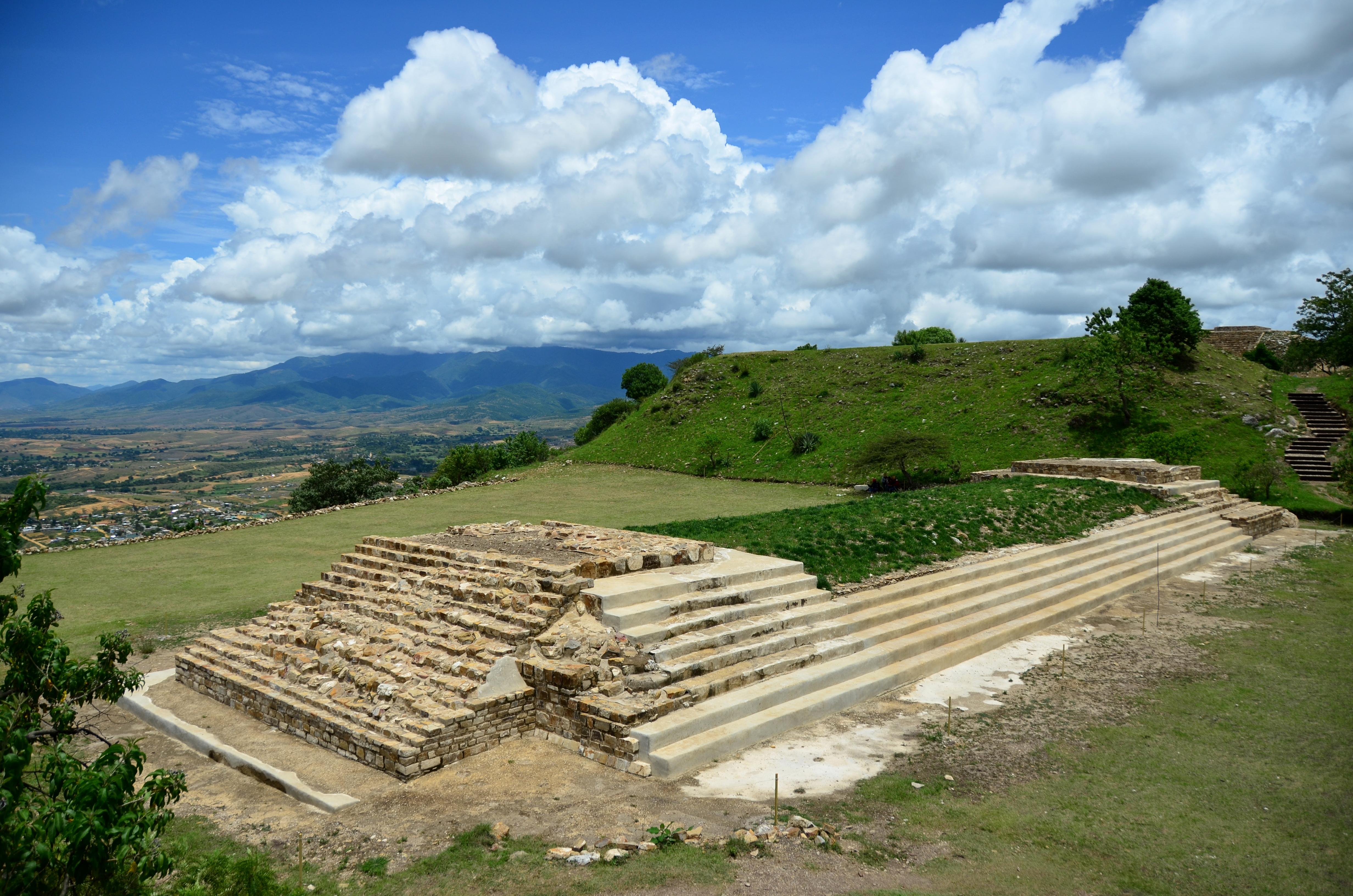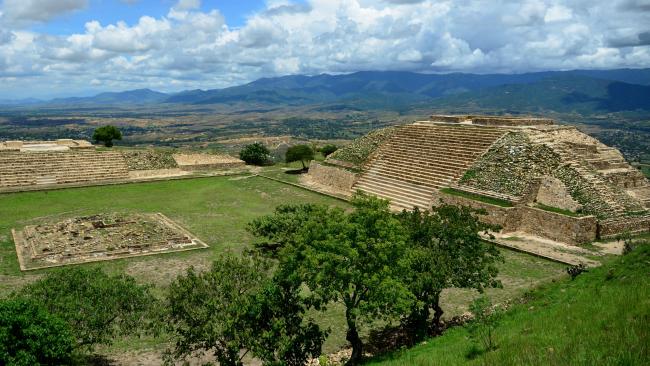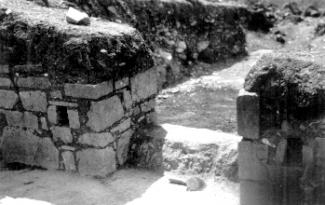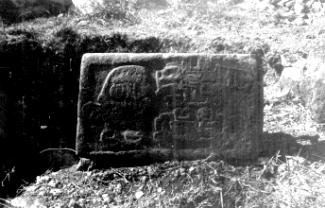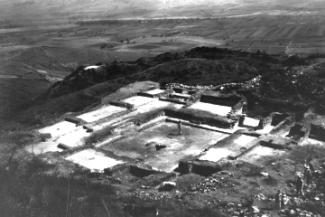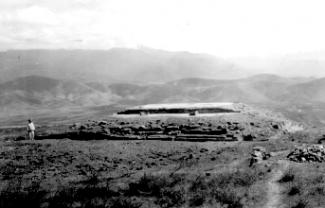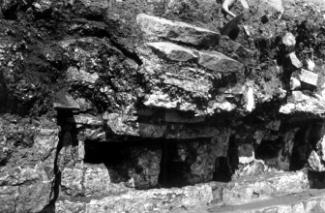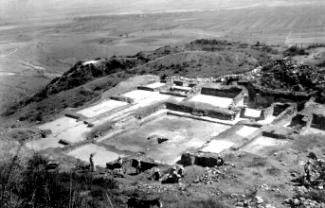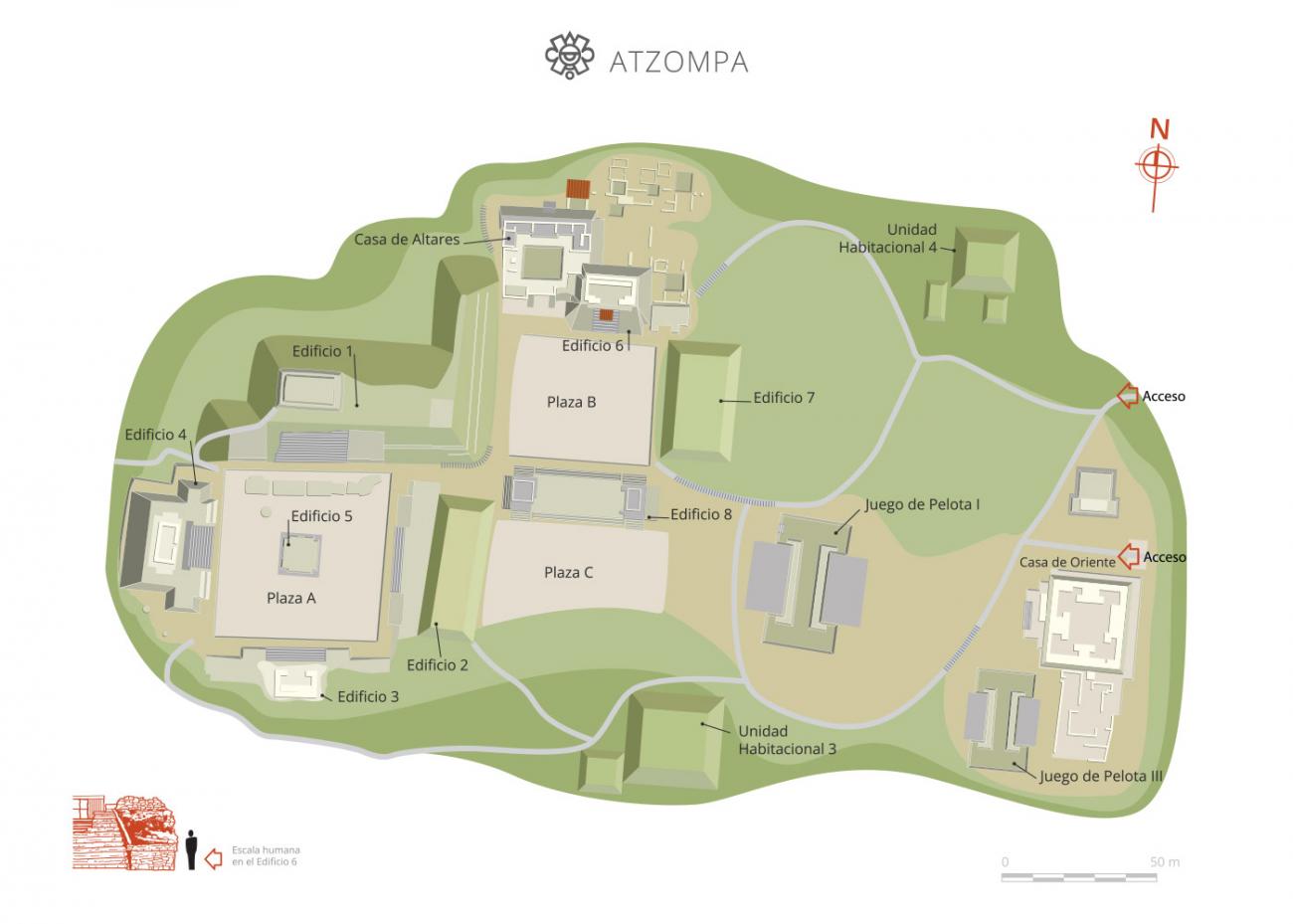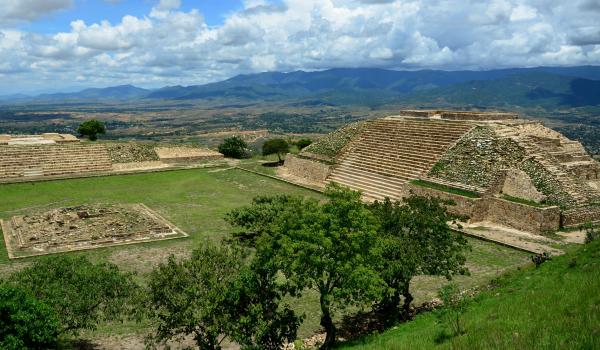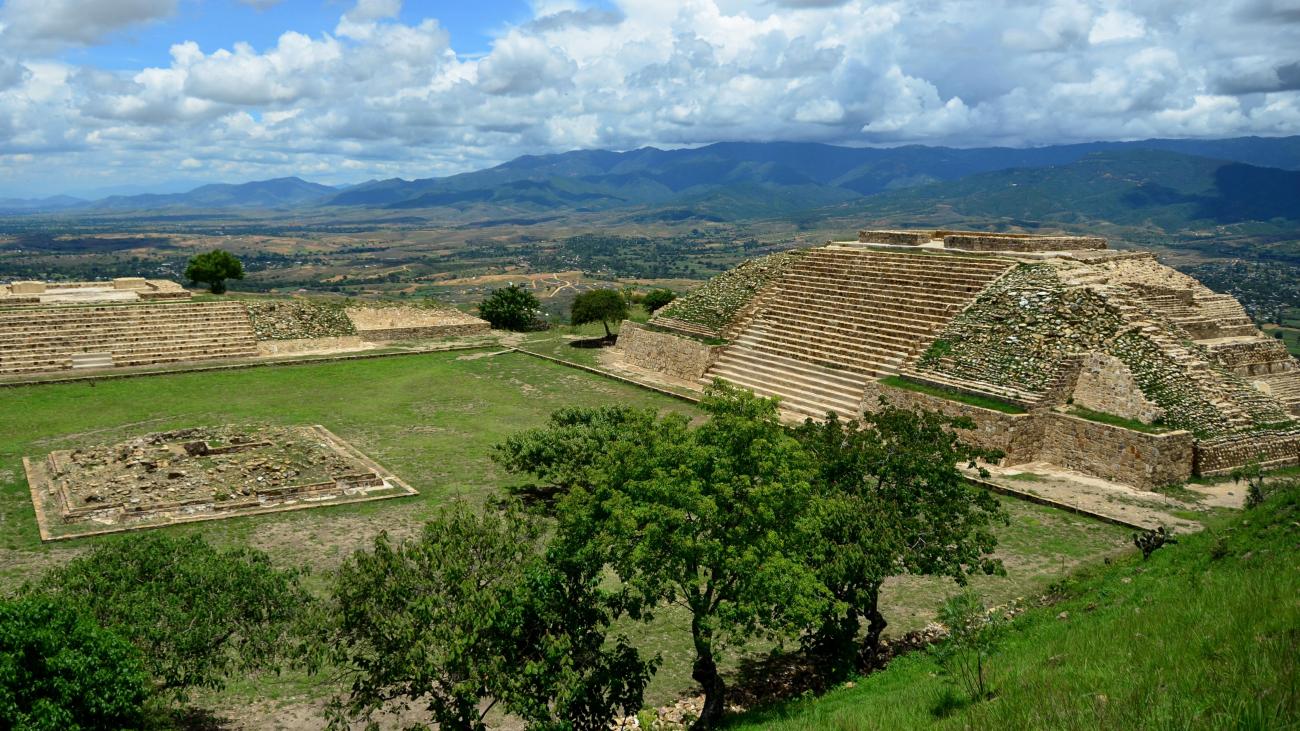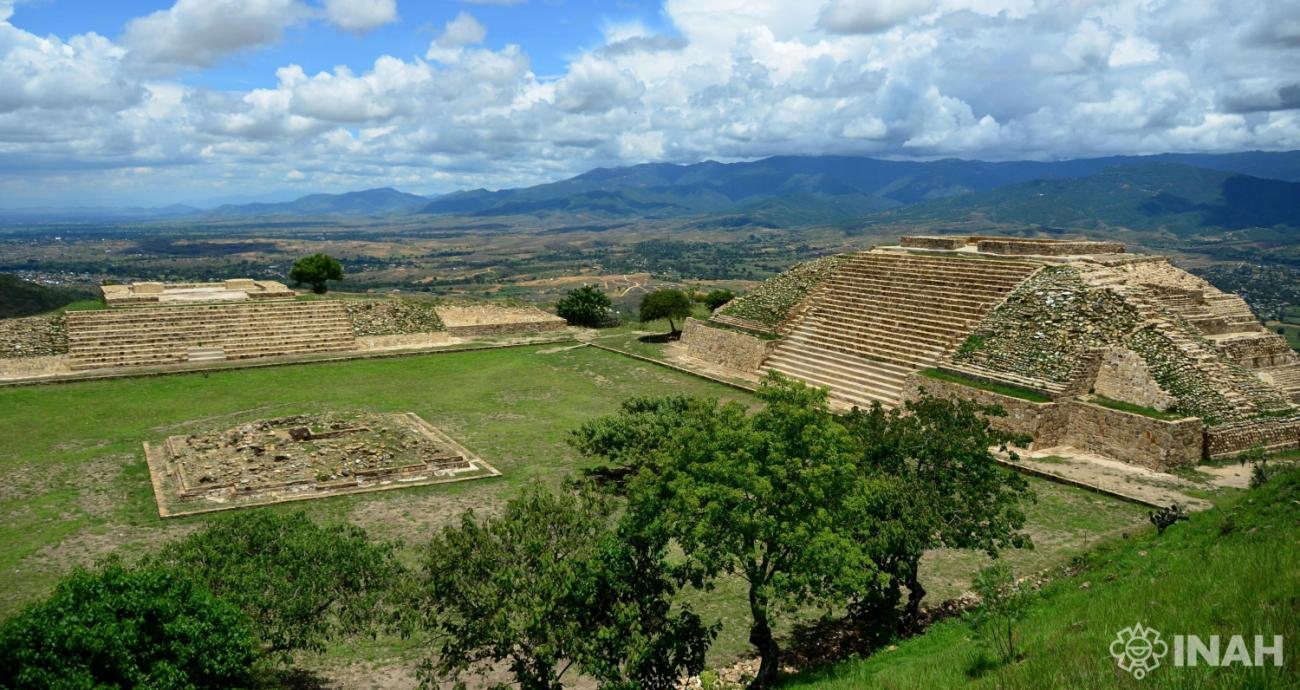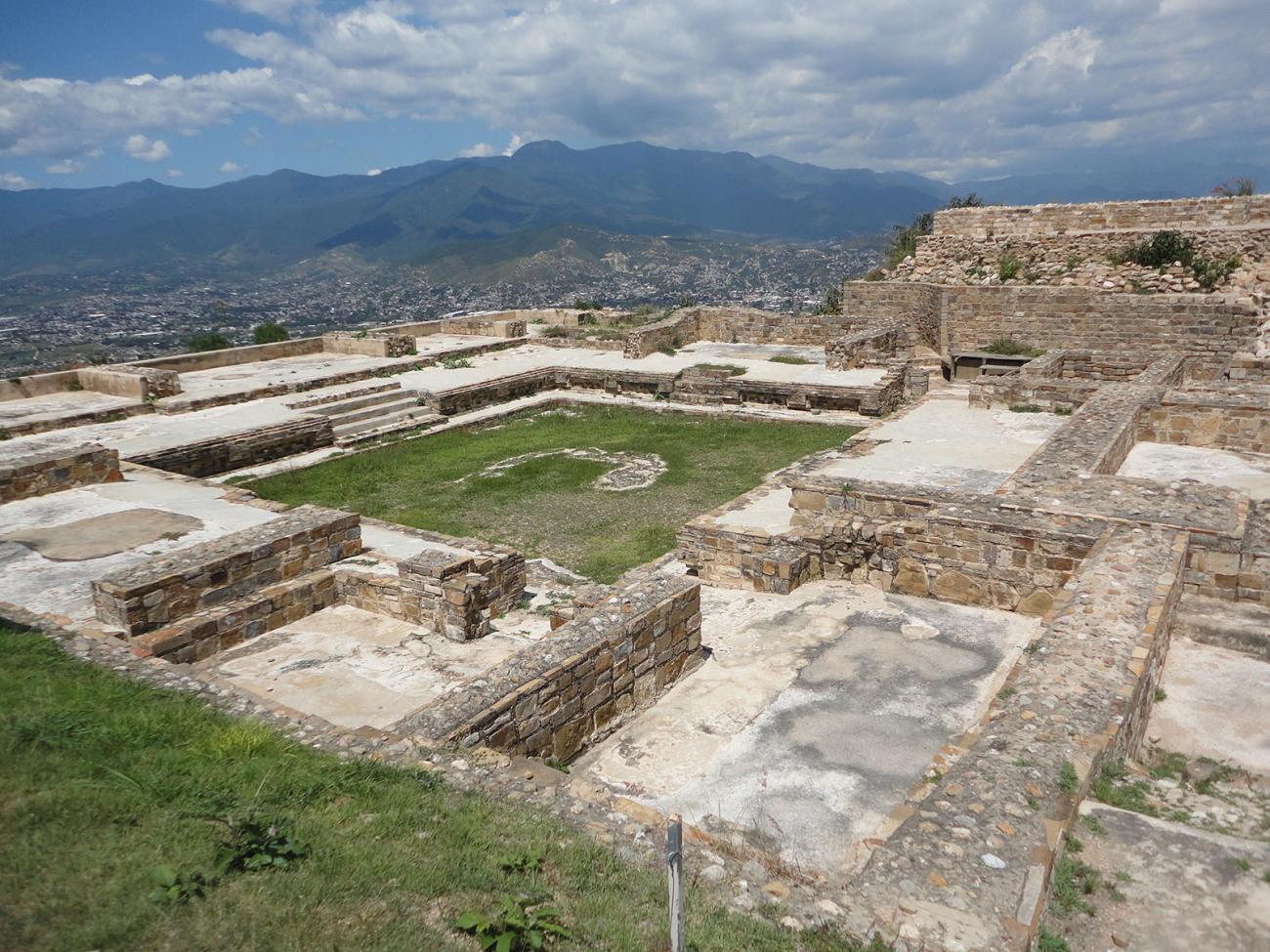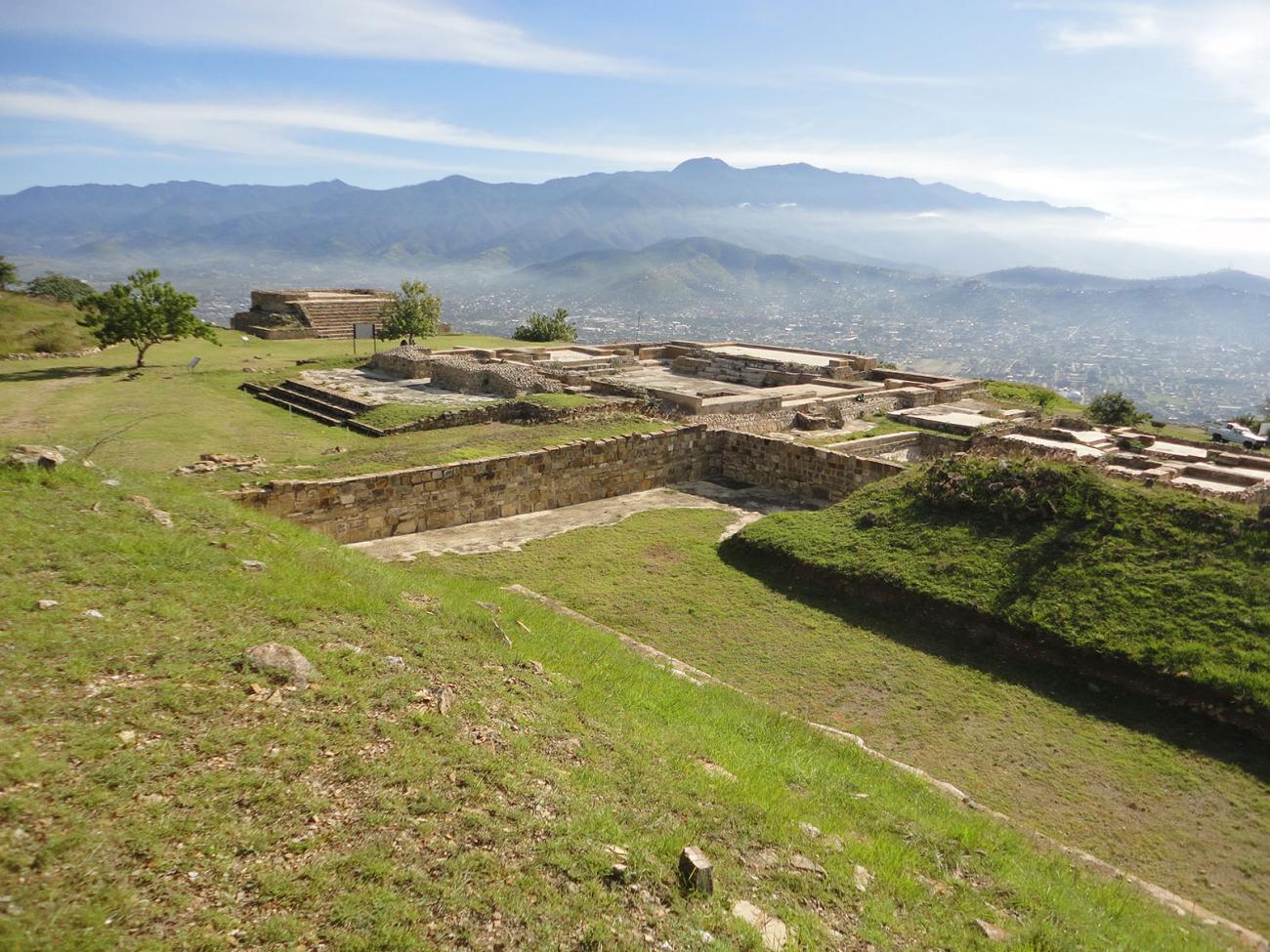The monumental complex of Atzompa lies in the municipality of Santa María Atzompa, Oaxaca, between corner points 16 and 31 of the protected area boundaries for the Monte Albán archeological zone. Atzompa’s name comes from the Nahuatl words atl (“water”), tzontli (“head”) and pan (“place”), which means “at the water’s head,” a name assigned by the Mexica culture during its expansion into the Valley of Oaxaca in the Postclassic period. Atzompa is a Zapotec settlement which belongs to the pre-Hispanic city of Monte Albán. It was settled in period IIIB-IV (650-850).
The high-status palatial units within the monumental complex are noteworthy, as are its three Mesoamerican ballgame courts. Ballcourt I, the largest in the pre-Hispanic city of Monte Albán, is the most outstanding of these. Moreover, the site has a privileged view of the Valley of Etla from its northern side. It is also important to mention the quality of workmanship of its ceramic objects, such as effigy vessels, funerary urns and apaxtles (large clay pots).
The archeological project for the Atzompa monumental complex began in earnest in 2007, when the first works of excavation, consolidation, restoration and material analysis were performed. Thanks to this project, the site was opened in September 2012. Archeologically speaking, it is now one of the most important areas in the central valleys of the state of Oaxaca.






